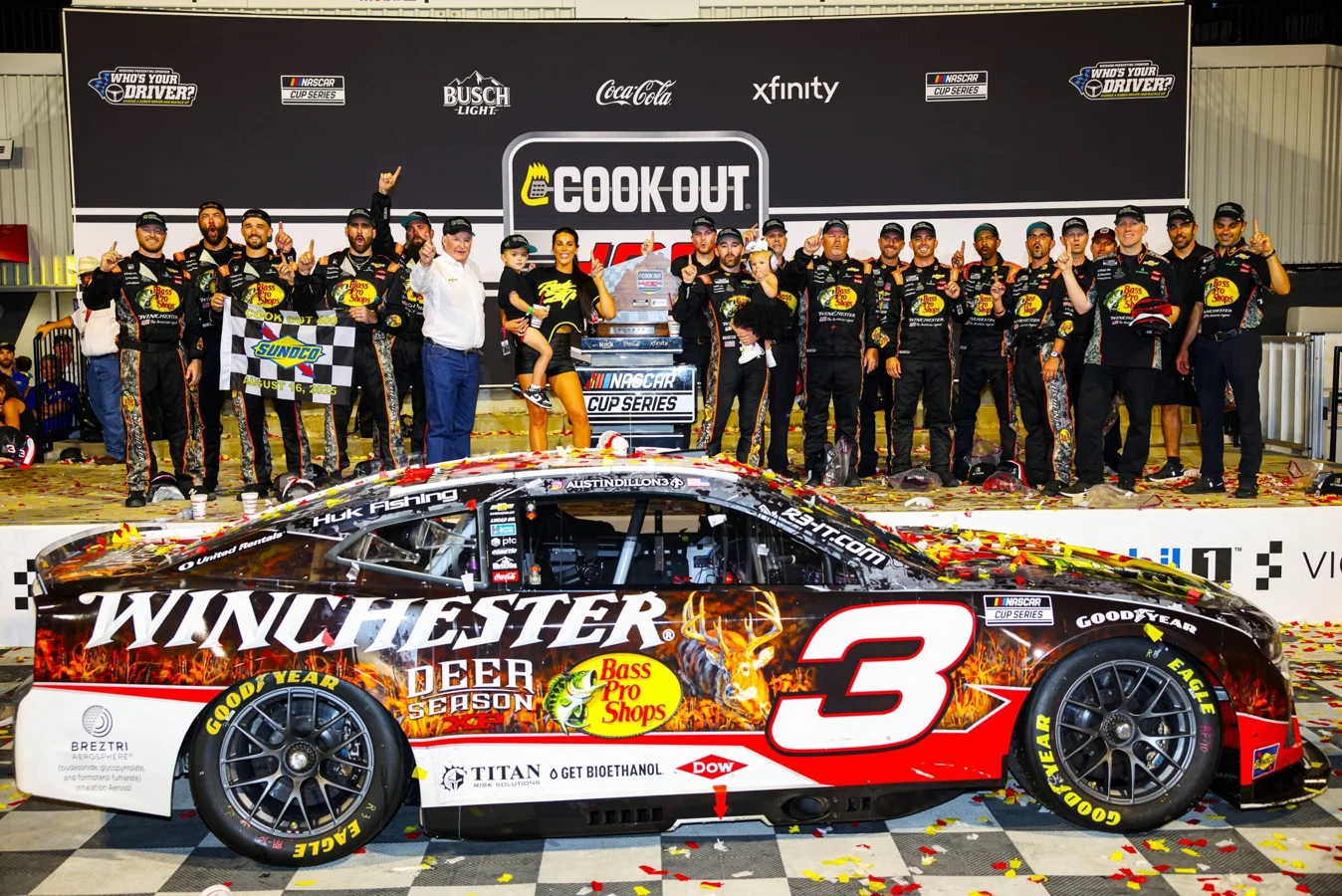Austin Dillon delivered an electrifying performance at Richmond Raceway, clinching victory during the Cook Out 400 on a night where tire strategies transformed the competition. The Austin Dillon Richmond NASCAR win brought new attention to Goodyear’s softer right-side tires, offering a renewed sense of excitement and sparking debates about the future of the Next Gen car and the broader playoff system.
Dillon’s Victory and Tire Drama Shine at Richmond
Austin Dillon executed a nearly flawless race, guided by expert strategy from Richard Boswell, as he navigated the challenging conditions at Richmond. Goodyear’s decision to introduce a new, softer tire compound for the right-side wheels created a thrilling dynamic, generating some of the most intense and competitive short track racing the venue has seen in years.
This victory marks Dillon’s first win of the season, reestablishing him as a force at Richmond and making a significant impact on the NASCAR Playoff landscape. The sellout crowd was treated to a fast-paced event full of side-by-side battles, reigniting enthusiasm for short track events in the Next Gen era. The question quickly surfaced: does this one race signal a turning point for NASCAR, or are fundamental issues still unresolved?
Goodyear’s Softer Tires Generate Buzz
Goodyear’s updated tire choice was central to the night’s dramatic racing. The new combination, specifically designed for worn tracks like Richmond’s aged asphalt, allowed drivers to push harder and provided more on-track action than seen in recent years. This experiment with tire compounds is being closely watched as a possible fix for previous complaints about the Next Gen car’s performance on short tracks.
Jeff Gluck from The Athletic highlighted the night’s importance for NASCAR, crediting the dynamic tire setup and high-energy racing for capturing the crowd’s enthusiasm. He discussed the pivotal role Goodyear played and acknowledged that while the problems with the Next Gen car are not solved, NASCAR found hope in the competitive spectacle produced at Richmond:
“This was a really big night for NASCAR, I think,”
—Jeff Gluck, The Athletic
He further noted the shift in public focus caused by the spectacle at Richmond:
“Again, Goodyear brings this softer option tire and you’re go, ugh, you see there’s a glimmer of hope here, right? Everybody’s been putting this on the car, you know, ‘The car sucks, the car sucks.’ It’s like, okay, Goodyear, you’ve gotta fix it for us, right? And Goodyear has shown they’re getting closer to really figuring this thing out here. At least on a track with high wear. That’s the difference. Not all tracks are able to wear the tires like Richmond is with the old asphalt.”
—Jeff Gluck, The Athletic
Playoff Implications and Ongoing Debates in NASCAR
Dillon’s win not only shook up the standings but also reignited discussions surrounding the win-and-in playoff criteria and the overall competitive format. While much of the frustration with the short track package and the Next Gen vehicle may have cooled temporarily, the performance at Richmond highlighted that systemic questions remain within the sport.
Other prominent NASCAR figures and entities—including The Athletic, Goodyear, the packed crowd, and analysts like Jeff Gluck—were all integral to the dialogue surrounding the race. The excitement did not fully erase long-standing concerns but did provide tangible hope that upcoming races, especially those on high-wear tracks, might benefit from similar tire innovations.
What the Richmond Win Means for NASCAR’s Future
The Cook Out 400 at Richmond Raceway will be remembered as a revitalizing moment for short track racing and as a benchmark for future events incorporating softer tire compounds. While debate continues over playoff structures and the Next Gen car, Austin Dillon’s Richmond NASCAR win has sparked optimism and shifted attention back to what fans love: thrilling, unpredictable racing. Stakeholders and fans alike will be watching closely as NASCAR builds on this momentum—with all eyes on Goodyear, drivers, and tracks to see if the success at Richmond can be replicated elsewhere this season.


